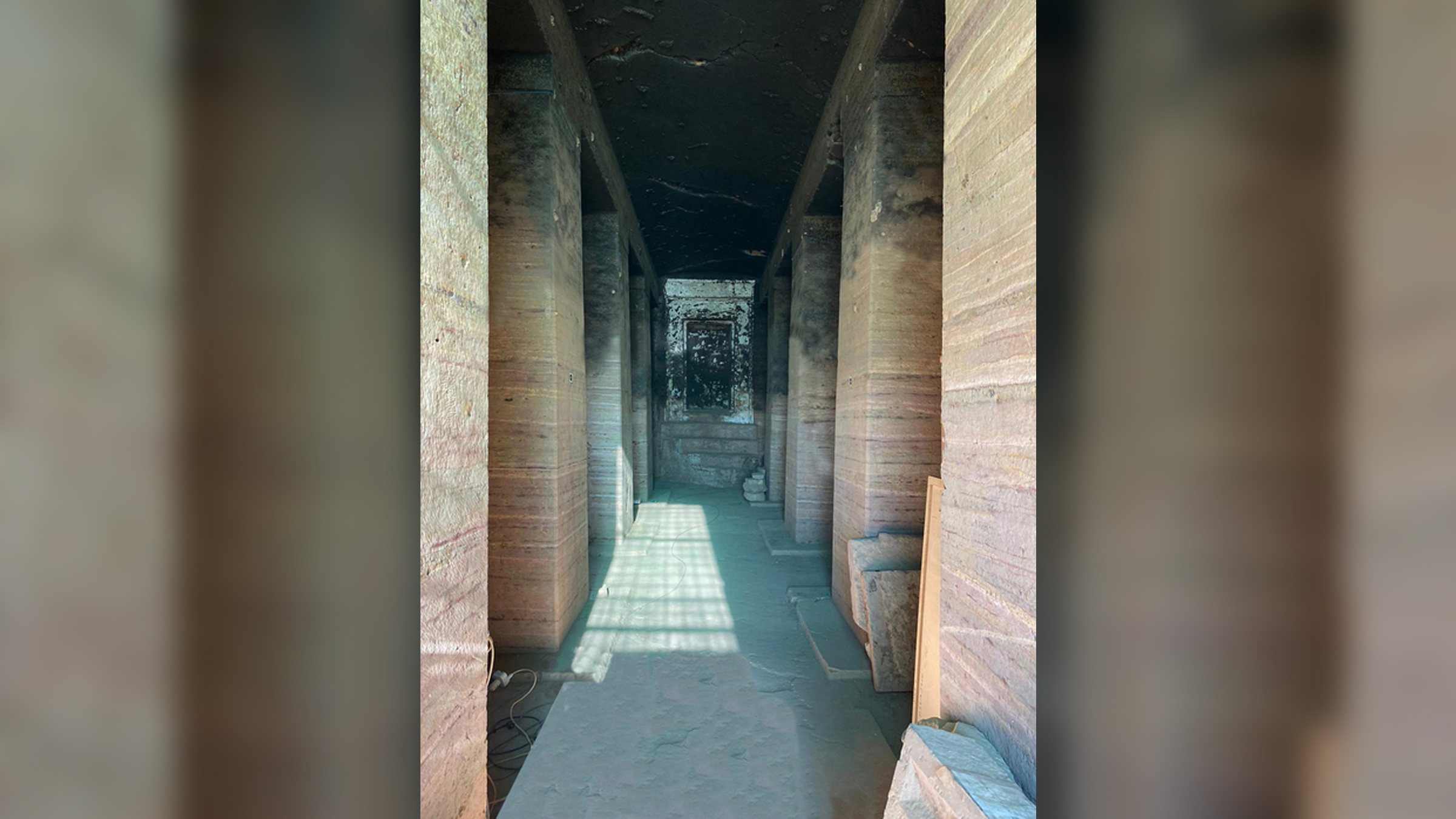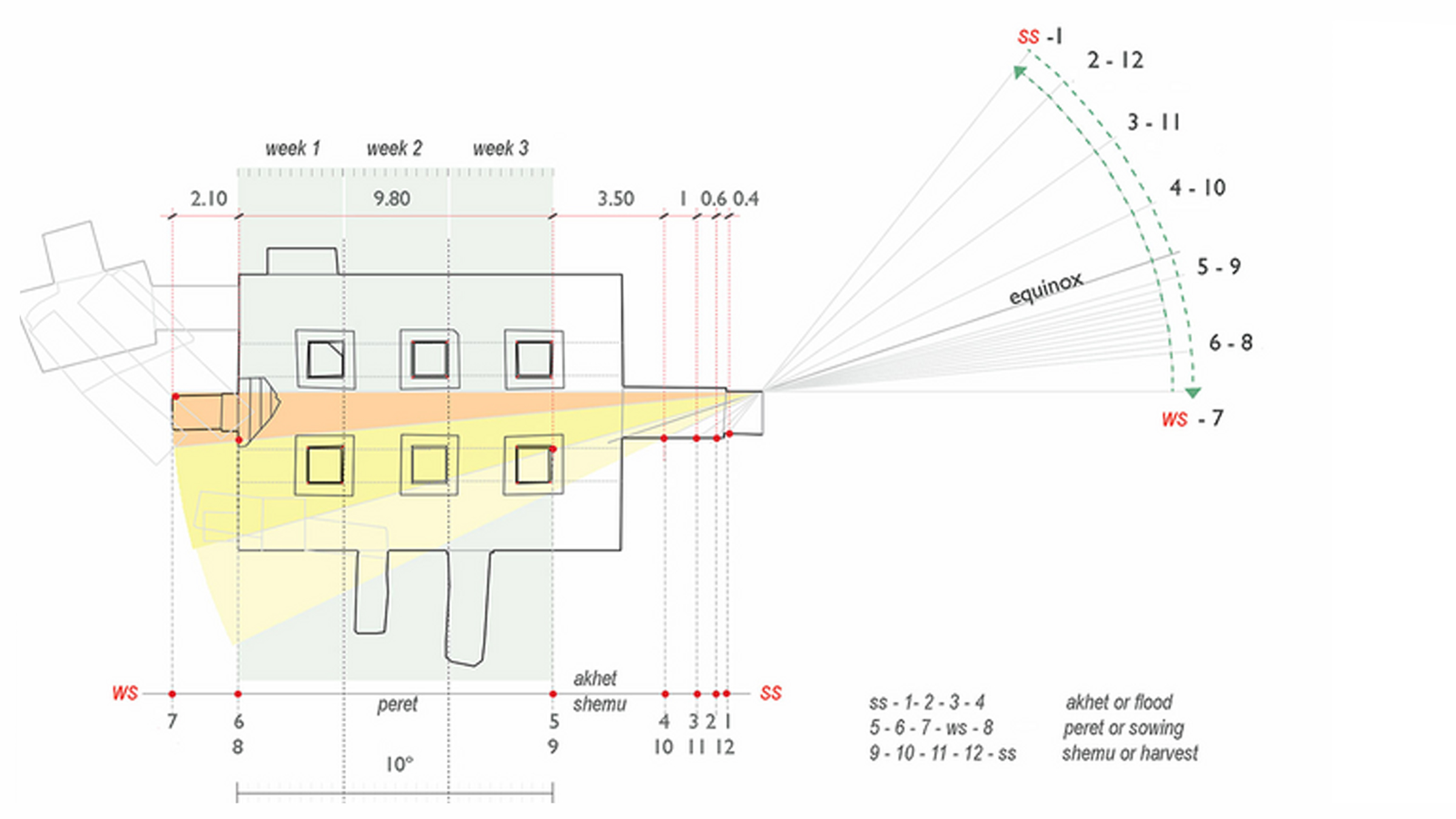Tomb aligned with winter solstice sunrise excavated in Egypt
An ancient tomb whose chapel was oriented toward the sunrise on the winter solstice may be the oldest of its kind in Egypt.

Archaeologists have unearthed an unfinished, 3,800-year-old ancient Egyptian tomb with a chapel perfectly aligned with the sunrise on the winter solstice. Archaeologists say that this might be the oldest known tomb in Egypt that is aligned with the winter solstice.
The tomb, near modern-day Aswan, was built during Egypt's 12th dynasty, part of a time period sometimes called the "Middle Kingdom" in which Egypt thrived.
Located in the Qubbet el-Hawa necropolis, the tomb held the burials of two governors, researchers wrote in a study published in July in the journal Mediterranean Archaeology and Archaeometry. In ancient times, graverobbers plundered many of the artifacts placed in the tomb, including the governors' mummies.
The name of the governor who originally built the tomb is unknown, while the other governor buried there was named Heqaib III according to an inscription found in the tomb and in historical records. Both governors were in charge of the nearby town of Elephantine, albeit at different times, the team noted in a statement.
The tomb's chapel contains a niche that was originally intended to hold a statue of the governor who built the tomb, the team wrote in the study. The tomb and the statue were never completed, study co-author Alejandro Jiménez-Serrano, an Egyptologist and archaeologist at the University of Jaén in Spain, told Live Science in an email. Just outside the tomb, the team "found an unfinished statue" that was supposed to be completed and put in the niche, said Jiménez-Serrano, who directs the team's excavations at the site, noting that it's not clear why the tomb was left unfinished.
Related: Here's the science of the winter solstice
The entranceway to the chapel was built in such a way that the rays of the sun could enter and light the chapel during the winter solstice, which occurs annually on Dec. 21 or Dec. 22. In effect, had it been completed, the governor's statue and chapel would have been bathed in light during the sunrise of every winter solstice, the day with the fewest hours of daylight. It may be the oldest known tomb in Egypt that is aligned with the winter solstice, the researchers noted.
Sign up for the Live Science daily newsletter now
Get the world’s most fascinating discoveries delivered straight to your inbox.

Why did ancient Egyptians value the solstice?
The winter solstice had an important meaning for the ancient Egyptians, the researchers told Live Science.
"The winter solstice marked the beginning of the daily victory of light against darkness, culminating in the summer solstice, the longest day on the earthly plane," study lead author María Dolores Joyanes Díaz, a researcher at the University of Málaga in Spain, told Live Science in an email.
Moreover, the solstice was seen as a moment of renewal. "After the winter solstice the days begin to be longer, which was interpreted as a rebirth," Jiménez-Serrano added. "This concept was transferred to [the] physic[al] world, specifically to the statue that represented the dead governor."
A scholar not involved with the team's research offered a similar interpretation. "I would understand it within the common sun cult as a symbol of new beginnings and resurrection," Lara Weiss, a curator of the Egyptian and Nubian collection at the National Museum of Antiquities in Leiden, the Netherlands, told Live Science in an email. "The winter solstice could be interpreted as [the] beginning of the annual course of the sun."
Ongoing research
Egyptologist Sir Ernest Alfred Thompson Wallis Budge first found the tomb in 1885, but it was not excavated until between 2008 and 2018, when it was fully uncovered by a team from the University of Málaga and the University of Jaén. After the excavation, Egyptologists examined the tomb's architecture, searching for any astronomical alignments.
The team used data gleaned from the tomb's architecture along with virtual modeling to see how the light in the chapel would have changed throughout the year.
Research is ongoing, and Jiménez-Serrano said that the team is examining other tombs in the necropolis to see if any others are oriented toward the winter solstice sunrise.

Owen Jarus is a regular contributor to Live Science who writes about archaeology and humans' past. He has also written for The Independent (UK), The Canadian Press (CP) and The Associated Press (AP), among others. Owen has a bachelor of arts degree from the University of Toronto and a journalism degree from Ryerson University.










